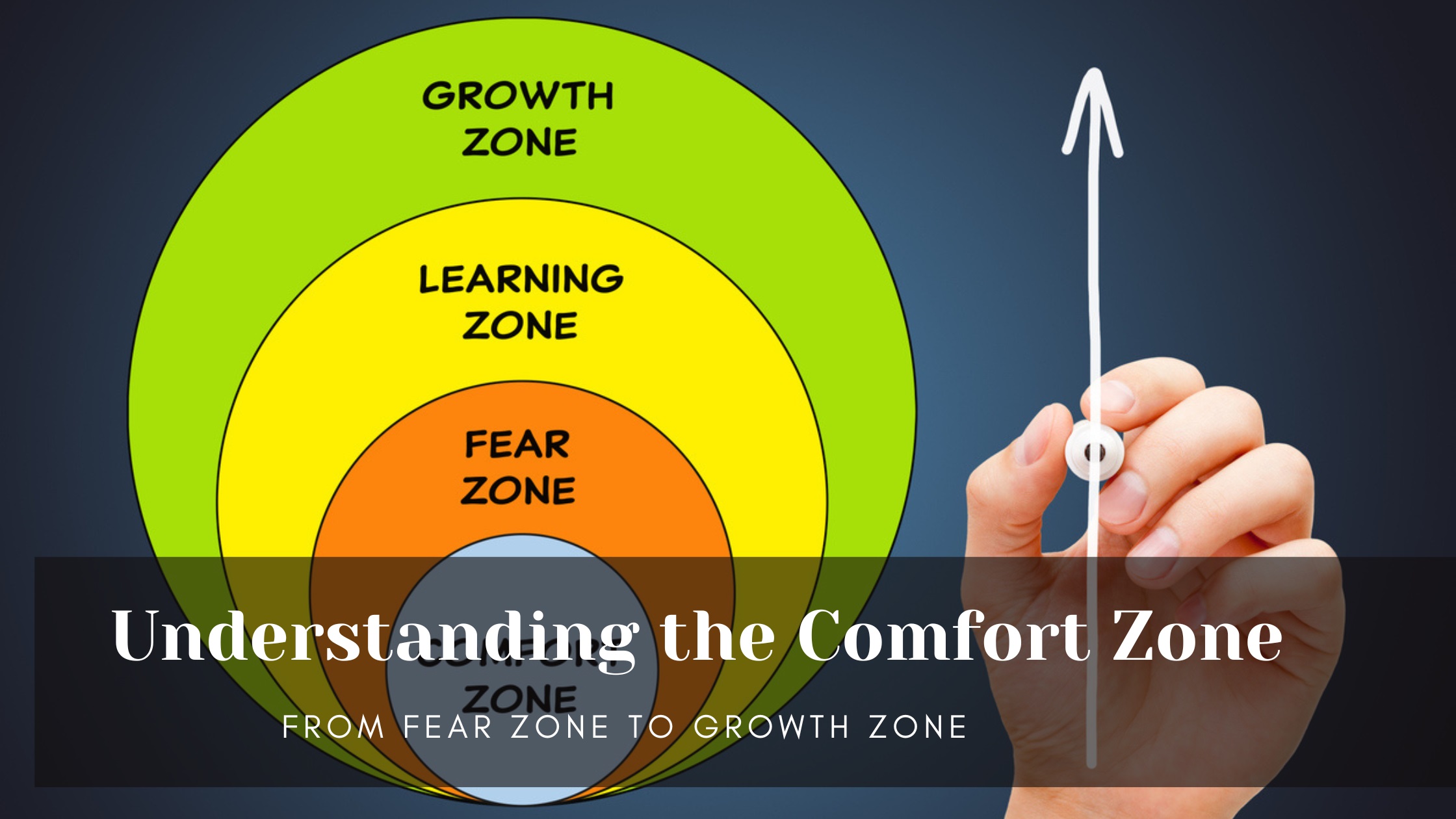
The concept of the comfort zone is something we all can relate to. It’s that space where we feel at ease, safe, and in control. However, stepping outside this zone can feel intimidating, even overwhelming. But did you know that by understanding the comfort zone chart and related theories, you can unlock your true potential? In this post, we will dive into the comfort zone, its relationship with the growth zone, and how navigating these zones can lead to personal transformation.
What is the Comfort Zone?
At its core, the comfort zone refers to a state of mental and emotional ease. It’s where we feel safe, secure, and in control. In this zone, we are doing things we’re familiar with, whether it’s tasks at work, interactions with others, or daily routines. But while the comfort zone provides stability, it also limits growth and personal development.
The Comfort Zone and the Growth Zone
The growth zone is the area where change, improvement, and learning happen. Moving from the comfort zone to the growth zone can be a challenge, but it is essential for expanding your abilities, developing new skills, and discovering hidden potentials.
In the comfort zone vs growth zone debate, the growth zone represents the unknown, where fear, discomfort, and uncertainty reside. Yet, it’s also where the magic happens. When you step outside your comfort zone and venture into the growth zone, you begin to develop resilience, confidence, and skills that will propel you forward in your personal and professional life.
Click Here to Explore Successful Communication on Video Calls!
Understanding the Comfort Zone Theory
The comfort zone theory suggests that human behavior falls into four main zones:
Comfort Zone: The familiar space where we feel safe.
Learning Zone: The space where we stretch our abilities but still feel in control.
Fear Zone: The area where fear and anxiety take over, often holding us back.
Growth Zone: The area where growth happens, pushing us to learn new things and develop.
According to this model, to truly grow, we must learn how to transition from the comfort zone to the growth zone.
Comfort Zone vs Growth Zone: What’s the Difference?
The difference between the comfort zone and the growth zone lies in the level of challenge and discomfort:
- In your comfort zone, you’re doing things that you’ve already mastered. It’s easy, and there’s little risk involved.
- In the growth zone, you’re doing things that are challenging, pushing you to stretch your skills and abilities. This is where learning happens, but it also means there’s risk and discomfort involved.
Making the transition from the comfort zone to the growth zone might not always feel easy, but it’s essential for personal development. The more you embrace challenges, the more you will grow.
The Comfort Zone Chart and the Growth Zone
The comfort zone chart can visually represent the relationship between these zones, helping you understand where you currently stand and where you need to go. Typically, the comfort zone diagram includes the comfort zone, fear zone, learning zone, and growth zone as its key components. By identifying which zone you’re in at any given time, you can decide whether to push yourself toward greater growth or stay within your safe space.
Comfort Zone: The easy space.
Fear Zone: Where self-doubt and fear emerge.
Learning Zone: Stretching your limits.
Growth Zone: Achieving transformation.
From Comfort Zone to Growth Zone: How to Make the Leap
Moving from the comfort zone to the growth zone requires a shift in mindset. It’s about embracing the discomfort that comes with change and seeing it as an opportunity to grow. Here are some steps to help you move forward:
1. Identify Your Comfort Zone
Before you can grow, you need to recognize your comfort zone. What tasks or environments make you feel at ease? These are the areas you might need to step out of to experience growth.
2. Embrace the Learning Zone
The learning zone is a crucial space on your way to the growth zone. Here, you start experimenting with new things. It might be uncomfortable at first, but it’s all part of the learning process. The more you embrace new challenges, the more confident you will become.
3. Push Through the Fear Zone
The fear zone is where most people get stuck. It’s where anxiety, self-doubt, and fear of failure arise. However, it’s essential to push through this zone because on the other side is the growth zone, where your potential is unlocked.
4. Enter the Growth Zone
Once you’ve passed through the learning zone and the fear zone, you’ll eventually reach the growth zone. In this space, you’ll experience true transformation. You’ll feel more confident, capable, and equipped to handle new challenges.
5. Repeat the Process
Personal growth is an ongoing journey. Once you’re in the growth zone, you’ll continuously face new challenges that require you to move through the comfort zone, learning zone, and fear zone again. Each time you do, you’ll expand your capabilities further.
The Importance of the Comfort Zone in the Growth Process
While stepping outside your comfort zone is necessary for growth, it’s important to remember that the comfort zone isn’t inherently bad. It’s a place of rest and recovery. You need moments in the comfort zone to recharge before venturing back out into the world to learn and grow.
The comfort zone also provides stability. It’s where you can reflect on your growth and plan for future challenges. It’s all about balance—finding the right mix of comfort and challenge to keep growing without burning out.
The Role of the Fear Zone in Personal Growth
The fear zone is often viewed negatively, but it’s an important part of personal growth. When you encounter fear, you have two choices: you can let it paralyze you, or you can use it as fuel to move forward. Facing fears head-on can be an incredibly empowering experience. It helps you build resilience and mental toughness.
The Learning Zone and Continuous Development
The learning zone is where the real growth happens. It’s where you gain new skills, acquire knowledge, and build the foundation for your growth zone. This is the space where you are continually improving yourself and adapting to new circumstances.
The Comfort Zone Model: A Guide to Personal Transformation
The comfort zone model is a useful tool for understanding how we navigate different stages of growth. It shows us that while staying in the comfort zone feels safe, it doesn’t allow for progress. To experience personal transformation, we must embrace the discomfort that comes with leaving the comfort zone and entering the growth zone.
Comfort Zone Diagram and Growth Zone Psychology
Many people use the comfort zone diagram to visualize their journey from one zone to another. The growth zone psychology emphasizes the importance of stepping outside your comfort zone to unlock your true potential. By understanding these zones and the fears and challenges associated with them, you can make better decisions about your personal growth path.
The Comfort Zones You Should Be Aware Of
There are several comfort zones in our lives, ranging from work, relationships, and even daily routines. Recognizing these different areas will help you pinpoint where you need to grow. Whether it’s learning a new skill at work, having difficult conversations, or trying new things in your personal life, moving beyond your comfort zones is essential for growth.
The Comfort Zone Graphic and the Need for a Shift
The comfort zone graphic visually represents the emotional states you go through as you move from one zone to the next. It’s a powerful reminder that growth requires change, and it’s okay to feel uncomfortable during the process.
Conclusion: Embrace the Journey from Comfort Zone to Growth Zone
Transitioning from the comfort zone to the growth zone isn’t always easy, but it’s one of the most rewarding journeys you can take. By understanding the comfort zone theory, the comfort zone chart, and the importance of each zone, you can make more conscious decisions about your personal and professional development. Remember, growth happens when you embrace discomfort, face your fears, and push yourself beyond the comfort zone.
Click Here to Learn Workplace Communication Hacks: Strategies for Success
FAQ
Ques 1. What is the comfort zone?
The comfort zone is the mental state where you feel at ease and in control. It includes familiar tasks, environments, and activities where there’s minimal risk and little challenge. Staying in the comfort zone often prevents personal growth and development.
Ques 2. What are the main zones in the comfort zone theory?
The comfort zone theory includes four main zones:
- Comfort Zone: The familiar, safe place.
- Fear Zone: Where anxiety, self-doubt, and fear emerge.
- Learning Zone: Where new skills and abilities are developed.
- Growth Zone: The space where you achieve significant transformation and progress.
Ques 3. Why should I move from my comfort zone to the growth zone?
Moving from your comfort zone to the growth zone is essential for personal development. The growth zone offers opportunities for learning, building resilience, and unlocking your true potential. It’s where real progress happens, even if it feels uncomfortable at first.
Ques 4. How can I transition from the comfort zone to the growth zone?
To transition from the comfort zone to the growth zone, start by identifying areas where you feel comfortable and then gradually introduce new challenges. Embrace discomfort, face your fears, and take small steps to stretch your abilities. Over time, you’ll become more confident in the growth zone.
Ques 5. What is the fear zone, and how does it relate to the comfort zone?
The fear zone is a state where fear, self-doubt, and anxiety take over, often preventing you from progressing. It comes right after the comfort zone and before the learning zone. It’s an important space because overcoming fear is necessary to reach the growth zone and realize your full potential.
Ques 6. What is the comfort zone diagram?
The comfort zone diagram visually represents the relationship between the comfort zone, fear zone, learning zone, and growth zone. It helps illustrate how stepping outside your comfort zone leads to personal development and growth.
Ques 7. How does the comfort zone affect my psychology?
Staying in your comfort zone can lead to stagnation, preventing you from discovering your potential. On the other hand, stepping outside the comfort zone activates new neural pathways and encourages learning, which positively impacts your growth zone psychology and personal development.
Ques 8. What is the difference between the comfort zone and the learning zone?
The comfort zone is where you feel at ease, while the learning zone is where you start to face new challenges and develop new skills. The learning zone requires pushing yourself beyond what’s familiar but is not as intense or overwhelming as the fear zone.
Ques 9. What is the growth zone and why is it important?
The growth zone is where transformation happens. It’s the space where you achieve personal development, expand your capabilities, and build confidence. Stepping into the growth zone requires pushing past fear and embracing challenges that lead to long-term growth.
Ques 10. Can I go back to my comfort zone after entering the growth zone?
Yes, it’s normal to return to your comfort zone periodically. Everyone needs moments of rest and reflection. However, the goal is to keep moving forward by continually pushing your limits and embracing new challenges. You will naturally cycle between zones as you grow and evolve.




